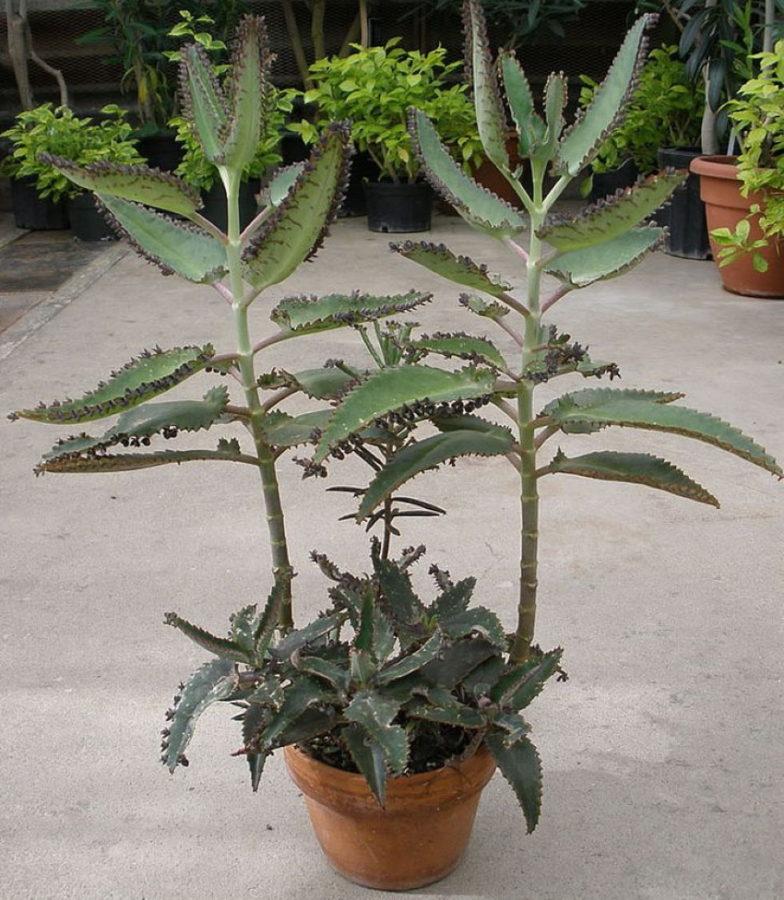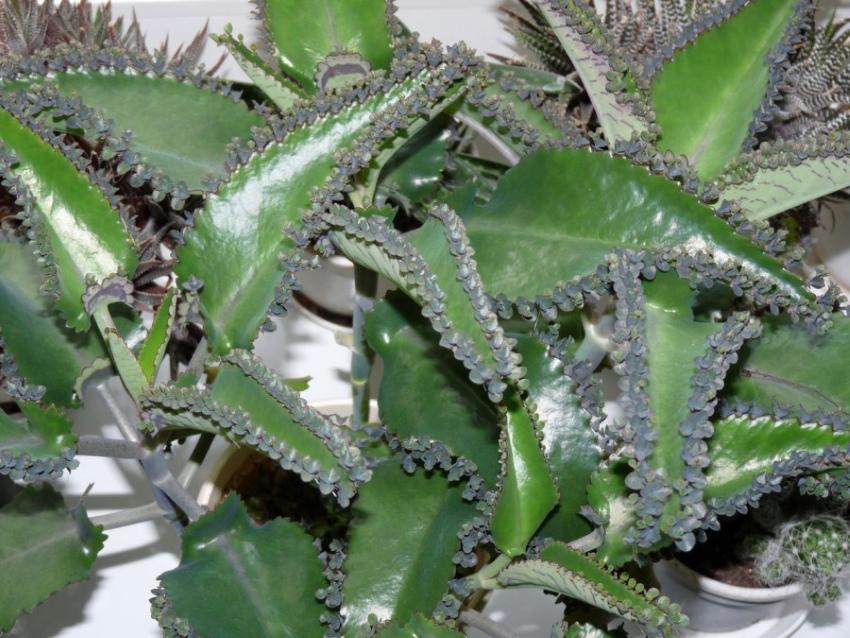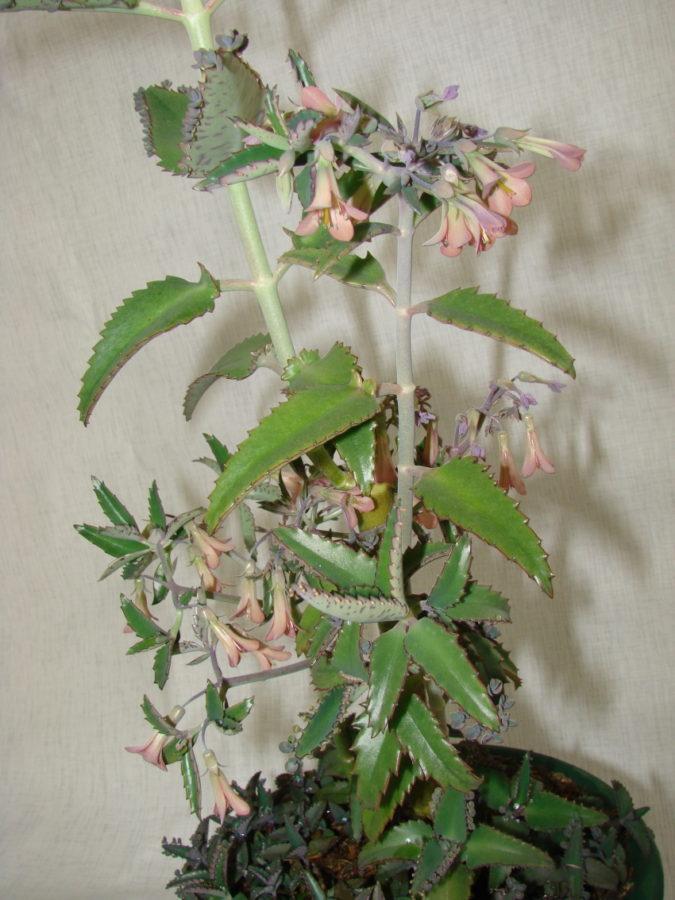Kalanchoe Degremona - home care for a green healer
 If Kalanchle Blossfeld is famous for its gorgeous flowering, then Degremona is the leader in the list of indoor medicinal plants. Kalanchoe Degremona, home care for which is simple and uncomplicated, in itself is not particularly decorative. The plant cannot boast of either a lush dense bush or colorful flowering. But in the glossy leaves lies a great healing power. A flower growing in a room already "works" for its owner, cleansing the room and "charging" the inhabitants of the house with cheerfulness.
If Kalanchle Blossfeld is famous for its gorgeous flowering, then Degremona is the leader in the list of indoor medicinal plants. Kalanchoe Degremona, home care for which is simple and uncomplicated, in itself is not particularly decorative. The plant cannot boast of either a lush dense bush or colorful flowering. But in the glossy leaves lies a great healing power. A flower growing in a room already "works" for its owner, cleansing the room and "charging" the inhabitants of the house with cheerfulness.
How Degremona differs from other types of Kalanchoe

When the succulent enters the breeding phase, you can recognize Degremona by barely looking at the leaves. Small children grow on each tooth, forming a semblance of a fringe.
Kalanchoe Degremona - home care
 Originally from the hot tropics, a succulent in a room needs a similar microclimate. He loves good lighting, but it is better to protect the leaves from direct rays. In summer, the flower will be comfortable on the east window. In winter, it is better to rearrange it on the southern windowsill or to supplement it. It also tolerates summer heat well, but it must be ventilated. Prefers to hibernate in the cool (15 ° C), especially if you want to see flowering. But the culture is absolutely not demanding of air humidity and the heating season is going through well. Regarding the soil, everything is clear here: a store-bought substrate for succulents is ideal.
Originally from the hot tropics, a succulent in a room needs a similar microclimate. He loves good lighting, but it is better to protect the leaves from direct rays. In summer, the flower will be comfortable on the east window. In winter, it is better to rearrange it on the southern windowsill or to supplement it. It also tolerates summer heat well, but it must be ventilated. Prefers to hibernate in the cool (15 ° C), especially if you want to see flowering. But the culture is absolutely not demanding of air humidity and the heating season is going through well. Regarding the soil, everything is clear here: a store-bought substrate for succulents is ideal.
Having created comfortable conditions for Degremona, all that remains is to control soil moisture and help the bush grow:
- Watering should be done in moderation, with a cool wintering and rarely at all (no more than 2 times a month).
- In order for the Kalanchoe to grow good healing leaves, feeding will not interfere, but not in winter. The question of the choice of fertilizers is also not worth it - this is a special liquid mineral complex for succulents.
- Occasionally, you can spray the leaves or wipe them if there are no children on them yet. This will help clear accumulated dust from them.
- Too elongated bush can be cut by shortening the tops.
- Young bushes need an annual transplant for the next 3 years, as the roots grow rapidly. In the future, the transplant can be carried out once every couple of years.
Most often breeds Degremona with cut apical petioles, leaves or babies.The latter build up their own roots and are already formed Kalanchoe, but only tiny.